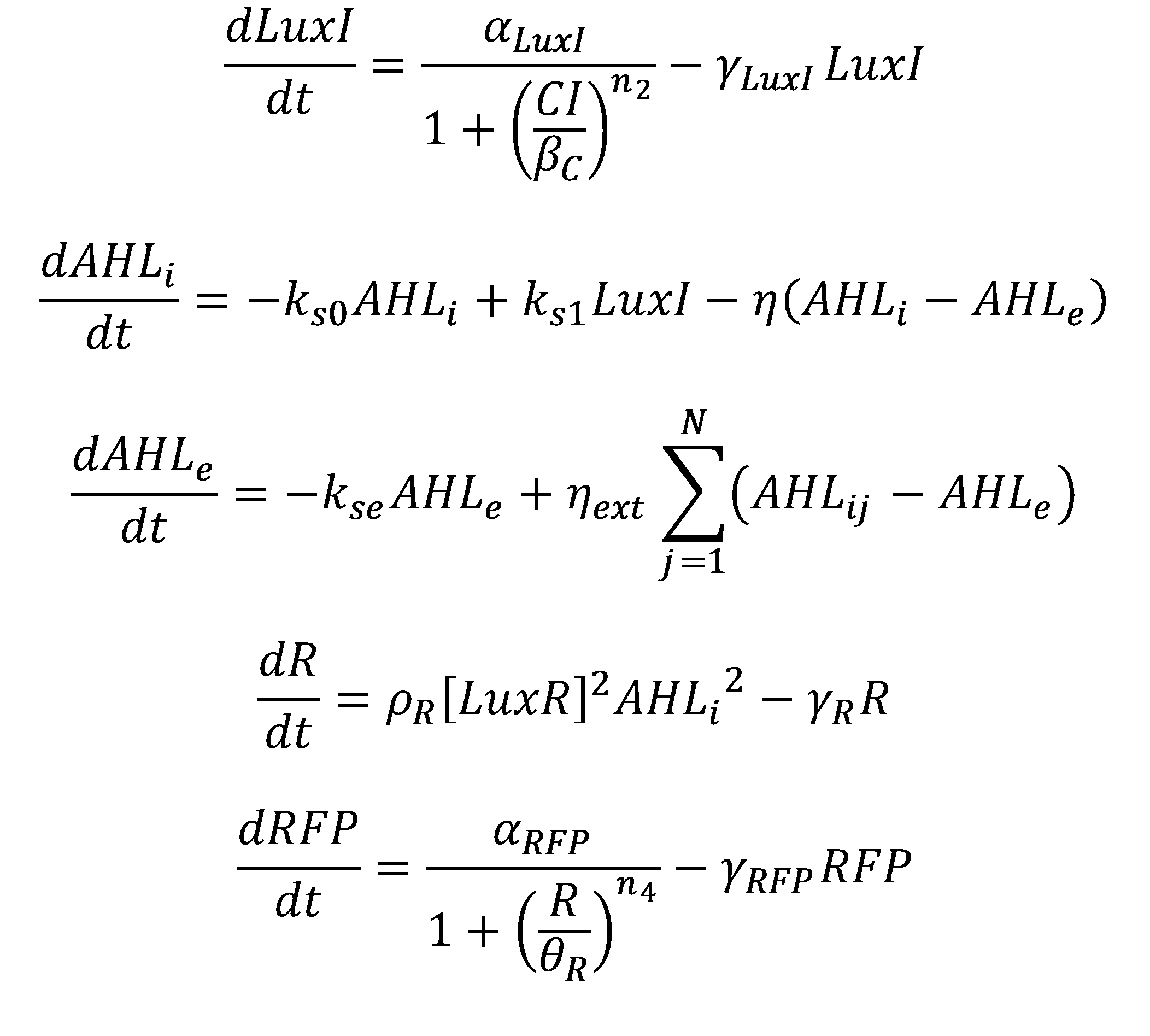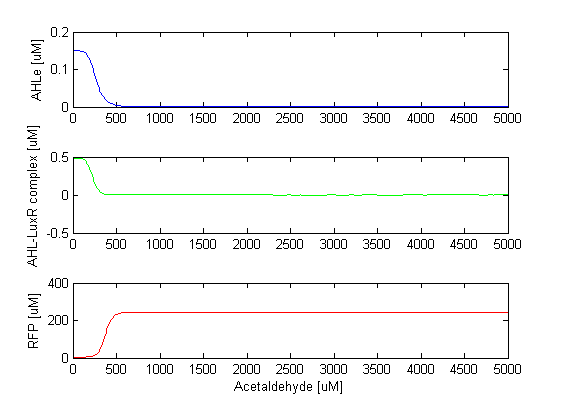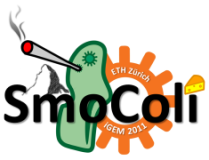Filter
This module acts like a high pass amplitude filter for the toxic input substance, since it produces RFP only when the toxic substance concentration goes above a certain threshold.
At high acetaldehyde concentrations, TetR is repressed, so the repression of CI by TetR can not be established.
At high xylene concentrations, XylR is activated and it triggers CI expression.
In both models, at high concentrations of the toxic substance CI is expressed and it inhibits the production of LuxI, which means that AHL is not produced. Once AHL is not there, it can not bind to LuxR, so LuxR can not repress RFP anymore. This results in RFP expression; all the cells turn red. As mentioned, this module of the model acts as a high pass amplitude filter for the toxic substance, or low pass amplitude filter for AHL, since AHL is produced only when the toxic substance levels are low.
The ODEs for the states involved in the second module of the system are given below:
 Equation system 4: ODEs for the states involved in the Filter module. AHLi represents the intracellular AHL concentration, AHLe is the extracellular one. R represents the complex between LuxR and the intracellular AHL. Short explanation of the parameters is given in the Parameter section.
The RFP steady state concentrations plotted against increasing toxic substance concentrations are presented in the figures below. For the acetaldehyde model, RFP appears after acetaldehyde crosses the threshold of 500 μM.
For the xylene model, the threshold is at 4500 μM.
 Figure 5: X-axis: increasing acetaldehyde concentration, Y-axis: responses of (from top to botton: AHL internal, LuxR-AHLi complex, RFP) to the different input concentrations of acetaldehyde. The threshold for the filter is at 500 μM. After that concentration RFP is produced.
 Figure 6: X-axis: increasing xylene concentration, Y-axis: responses of (from top to botton: AHL internal, LuxR-AHLi complex, RFP) to the different input concentrations of xylene. The threshold for the filter is at 4000 μM. After that concentration RFP is produced. |
 "
"




